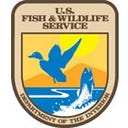Banding Together
Celebrating the Bird Banding Lab Centennial
In 2020, we celebrated an important milestone, commemorating one of the oldest partnerships in conservation — a century of work with the U.S. Geological Survey’s Bird Banding Lab (Lab). From it’s establishment in the wake the passage of the Migratory Bird Treaty Act in 1918, the Lab has amassed a catalogue of 77 million records, while adding another 1.2 million bands each year. Let’s take a look at how the work has developed over the years, and it’s continued importance in today’s high-tech world
A Long History
While there is some evidence of people banding birds for hundreds or even thousands of years — John James Audubon tied string around some birds in the early 1800s — an organized system of bird banding has only been around since the early 1900s. A growing movement of scientists began to study the habits of birds, but there was no good system for understanding one of the most important but mysterious aspects of birds’ lives: their migrations. A steep drop in the price of aluminum — which had been worth more than gold — made it possible to stamp identifying marks and return information on tiny pieces of metal which were light enough not to affect birds movements, but durable enough to last for years.
In 1902 Paul Bartsch of the Smithsonian used this new advancement to band around one hundred night herons near Washington, D.C., and the modern banding movement was born. Others were inspired to follow his lead, and by 1909 the growing number of enthusiasts formed the American Bird Banding Association. By 1920, the movement had become an official government program, the Bird Banding Lab, co-managed by the Canadian Wildlife Service and the U.S. Bureau of Biological Survey, which later became the U.S. Fish and Wildlife Service.
In 1935, banding data lead one scientist to develop the concept of migratory flyways. By 1946 the first large-scale waterfowl banding program was under way, leading to the establishment of the four administrative Flyways in 1948.
The reliability of banding data increased markedly during the 1970s, and even more so in the 1990s, with the addition of the (now defunct) 1–800 reporting number and the advent of the internet. Today the program continues refining methods to increase reporting. Currently, though it varies by year, the reporting rate for waterfowl bands is roughly 90%.
Working Together
Today, there are many participants in the banding program. U.S. Fish and Wildlife Service biologists band waterfowl every year as part of the Western Canada Cooperative Waterfowl Banding Program (WCCWBP), a long-term, large- scale pre-season waterfowl banding program. The program is a joint effort between the United States Fish and Wildlife Service (USFWS), Canadian Wildlife Service (CWS), state and provincial wildlife management agencies, the Flyway Councils, First Nations, and non- governmental waterfowl advocacy and research organizations.
Using Bands to Help Birds
It may be a simple ring of aluminum (or sometimes plastic), but we can learn a lot! Bands are recovered by recapture in banding programs, harvested by hunters, or found after death. Banding records help scientists understand bird migration patterns, population status and trends, behavior, and other information. Data is widely used by scientists to make better decisions for management of bird populations, such as setting hunting seasons, or protecting habitat.
We have learned much about birds through banding over the decades. For example, in 1944, American scientists first learned that chimney swifts wintered in Peru when bird bands were returned to the US embassy there.
More recently, Wisdom, the Laysan albatross was recognized to be both the oldest bird in the world and the oldest bird mother, when she hatched chicks earlier this year at Midway Island National Wildlife Refuge through banding data. In fact, the same biologist who originally banded Wisdom in 1956 returned and found his band on her in 2002!
You Can Help!
Perhaps the greatest strength of the bird banding lab is the network of people around the country who report banded birds they encounter. If you find one, you can become part of this great legacy too! Just go to www.reportband.gov. You’ll need the band number, or numbers. If you are lucky, you might even find a reward band. You’ll also need to know where, when and how you encountered the bird, and for your contact information, in case there are any questions. The USGS Patuxent Bird Banding Lab will send you a certificate of appreciation that includes information about the sex, age and species of the bird, and where and when it was banded. You can even keep the band!
One hundred years, dozens of partners, and millions of people: the numbers add up to a legacy of helping birds wherever they are.
